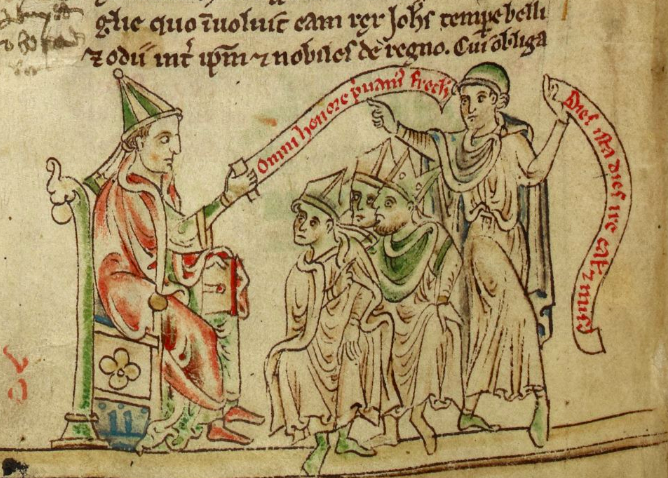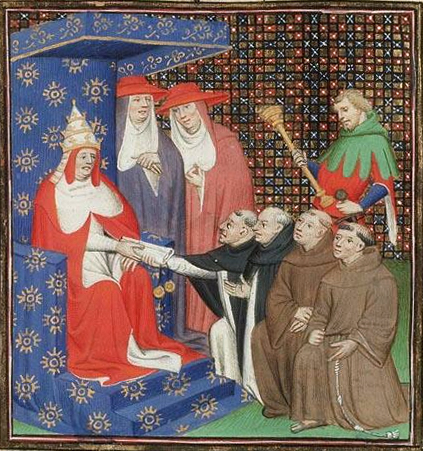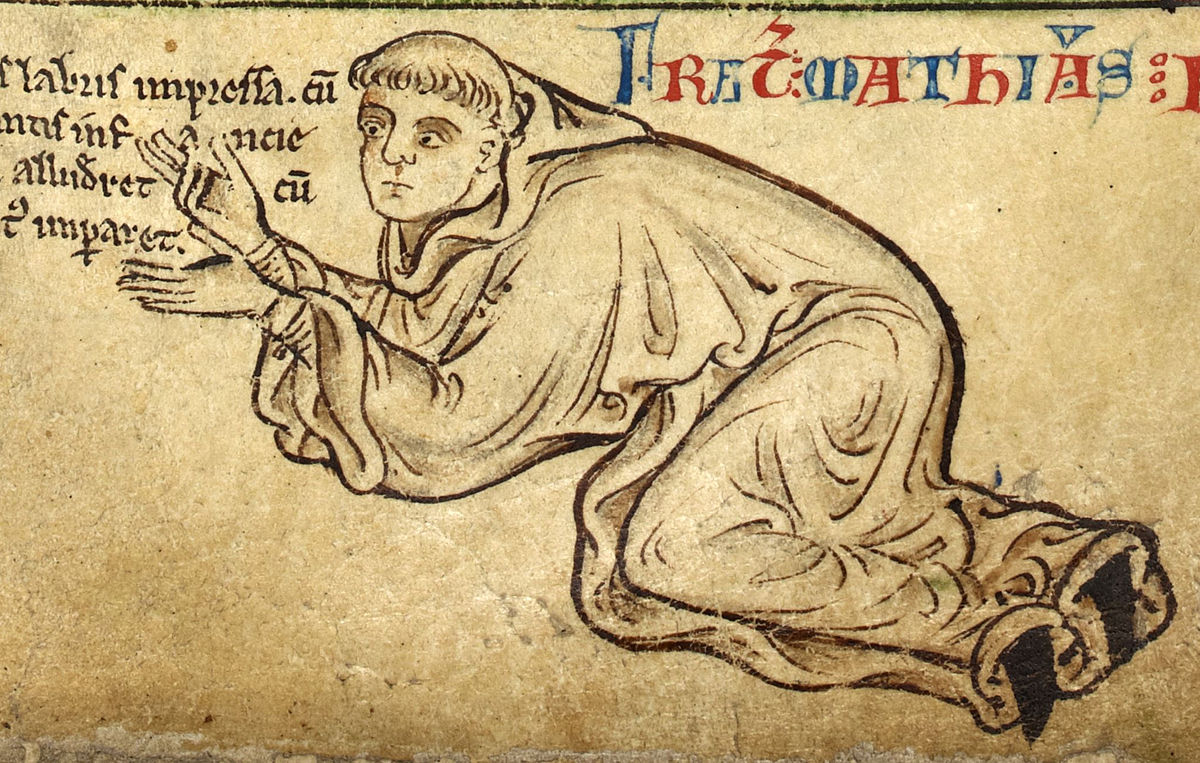The medieval period was full of confrontations between the dual powers of medieval sovereignty—the secular and the sacred. These can be seen in such famous episodes as Emperor Henry IV’s penitent kneeling at Canossa or the martyrdom of St. Thomas Becket over his disagreements with his old friend, Henry II of England.
While it would be possible to tell the story of Emperor Frederick II and the two popes he sparred with in a similar manner, Brett Edward Whalen brings a refreshingly new perspective to the thirteenth century struggle for power in Europe. By returning to the letters, chronicles, and other documents written to persuade the public, Whalen uncovers a communications battle between the papacy and the Holy Roman Empire that was really a disagreement over strategy rather than about goals or ideology.
At the heart of The Two Powers: The Papacy, The Empire, and the Struggle for Sovereignty in the Thirteenth Century is the story of the conflict between Emperor Frederick II of the Holy Roman Empire and two different popes who declared war on him, Gregory IX and Innocent IV. While all three men wanted, ostensibly, to support or fight in crusades in the Middle East in order to reclaim Jerusalem and the Holy Land, they often disagreed on how best to accomplish these goals.
Because they agreed on so much, the arguments became focused not on whether the crusades should happen at all, but instead on who had the power to decide when and how the crusades should be run. Mixed in with these battles over church policy were issues of control over portions of Italy, particularly Frederick II’s claims to both the Regno and Lombardy.
Both regions were politically volatile, and at various points in the conflict many of the city-states and regions of Italy would claim ideological grounds for siding with either the pope or emperor, when in fact their complaints were far more localized. These were issues of regional politics, not the ideological question of whether or not the pope enjoyed a fullness of power over all secular rulers. In fact, both the papacy and the emperor often sought compromises and a means to end the conflict, although various contingent factors got in the way.

Whalen argues that while the struggles between the Holy Roman Emperors and the Roman Pontiffs have been seen as the foundation of arguments about church and state, what these battles actually demonstrate is “the need to rethink the public nature of Christendom in the Middle Ages.”
By tracing papal letters, documents circulated by the papal curia, imperial letters and missives, and the judgements, complaints, and reports found in contemporary chronicles, Whalen reconstructs the way this struggle for power played out not in legal courts or among canon lawyers, but for the hearts and minds of the medieval European public. Whalen relies heavily on the chronicles to get a sense of the reception of the letters circulated by both parties in what he sees as essentially a public relations battle between the two powers. Both sides used formal documents as well as rumors, and these rumors circulated throughout Europe, from Italy all the way to the British Isles.
This was a time in which it would be easy to claim that the papacy, with its ability to direct churches across Christendom, engage crusaders in holy warfare, and mobilize the newly recognized mendicant orders, should have been in a much stronger position in this public relations war. Whalen demonstrates, however, that while we like to think of the medieval church as a monolith, it often operated according to local customs and concerns. Bishops in the empire had to balance their loyalties between the emperors and the popes.
Often, as seen in the letters of excommunication, threats of interdict, and revocation of bishoprics, Whalen is able to show that the papacy was actively struggling to maintain control over its far-flung churches and subordinates. While the pope may have been claiming a fullness of power, as Innocent IV did at the Council of Lyons where he excommunicated Frederick II for a final time, the pontiff’s ability to control even all of the bishops and other prelates in attendance was shaky at best.
That council, which produced the famous papal letter Eger cui lenia—which argued for the pope’s jurisdiction over all men, even emperors and kings—also produced riots in local towns in response to the excommunication of the emperor and the sense of papal overreach.

The Two Powers shines as an example of what we can find when we return to the primary sources. The book restores the place of contingency in history and should serve a reminder that outcomes are never so clearly determined as it seems when we look back.
Whalen’s use of chronicles and letters to reconstruct the public nature of these arguments, as well as the responses of the ordinary people the papacy and empire were trying to sway, is brilliant. He effectively unpacks the sources to show how writers brought their particular concerns about the papacy into the conflict.
For example, if at times Matthew Paris, a contemporary English chronicler, sided with the emperor over the papacy, it was not because he did not believe in the fullness of papal power but more because he disagreed with current church taxation in England.

At the same time, Whalen misses several opportunities to discuss the racialized nature of attacks made by the papacy against Frederick II, particularly the assertion that Frederick’s alliance with Muslim leaders disqualified him from being part of European Christendom.
Whalen is also keen to bring up the familial nature of the connection between many of the kings and powerful nobles throughout Europe but then fails to explore the ways in which women might have engaged with this public debate. This oversight only furthers the myth that medieval women were not engaged in the political disputes of their era.
The Two Powers is an excellent read for both the medieval historian and the interested public. Whalen weaves his arguments through a narrative that is compelling and easy to follow. His discussion of a medieval public whose opinion was courted and who actively shaped the parameters of discussion is shockingly modern, and in that vein Whalen’s book finds its greatest strength—that the separation between both the medieval and the modern and the secular and the sacred were never as clear as we want them to be.
